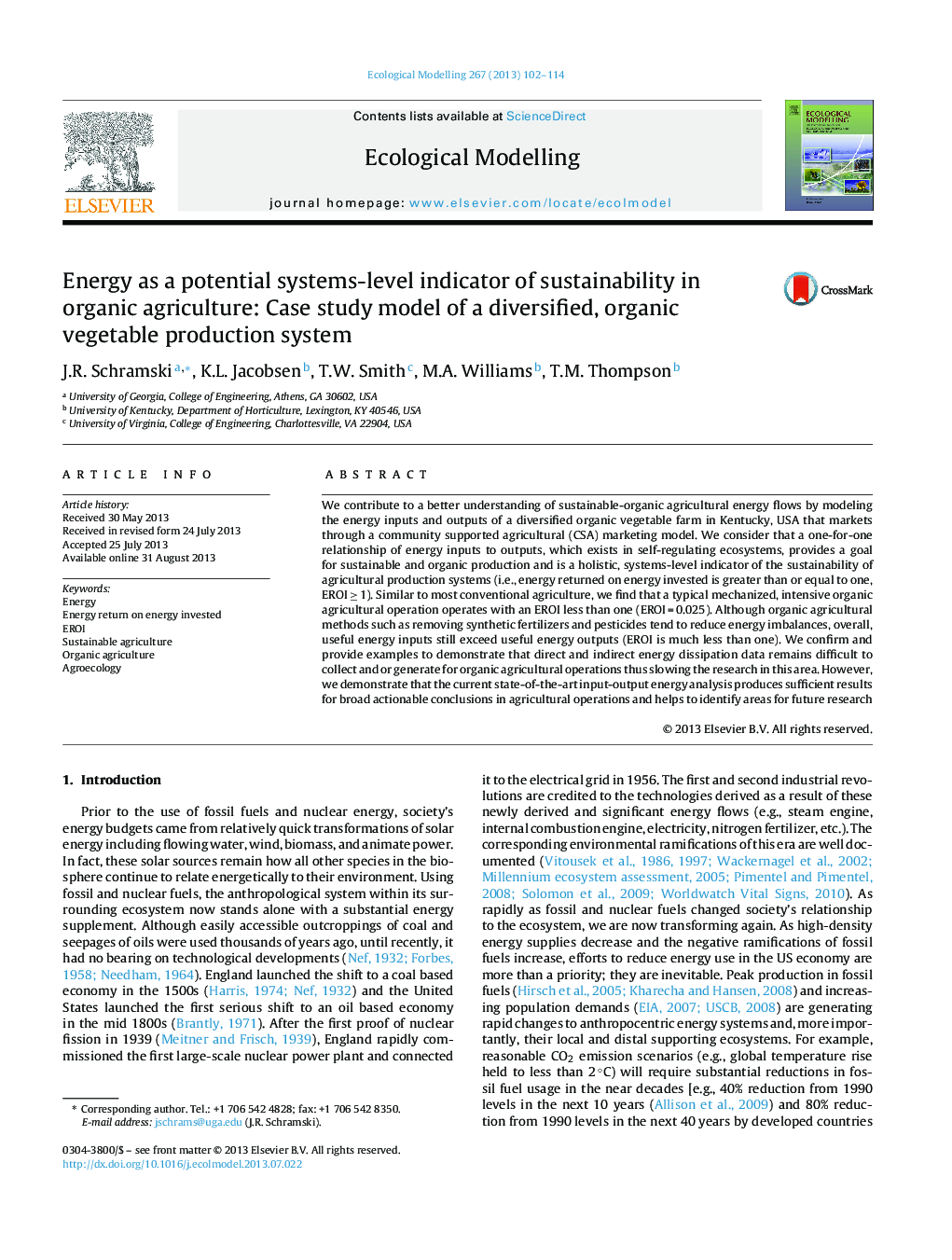| Article ID | Journal | Published Year | Pages | File Type |
|---|---|---|---|---|
| 4376060 | Ecological Modelling | 2013 | 13 Pages |
Abstract
We contribute to a better understanding of sustainable-organic agricultural energy flows by modeling the energy inputs and outputs of a diversified organic vegetable farm in Kentucky, USA that markets through a community supported agricultural (CSA) marketing model. We consider that a one-for-one relationship of energy inputs to outputs, which exists in self-regulating ecosystems, provides a goal for sustainable and organic production and is a holistic, systems-level indicator of the sustainability of agricultural production systems (i.e., energy returned on energy invested is greater than or equal to one, EROI â¥Â 1). Similar to most conventional agriculture, we find that a typical mechanized, intensive organic agricultural operation operates with an EROI less than one (EROI = 0.025). Although organic agricultural methods such as removing synthetic fertilizers and pesticides tend to reduce energy imbalances, overall, useful energy inputs still exceed useful energy outputs (EROI is much less than one). We confirm and provide examples to demonstrate that direct and indirect energy dissipation data remains difficult to collect and or generate for organic agricultural operations thus slowing the research in this area. However, we demonstrate that the current state-of-the-art input-output energy analysis produces sufficient results for broad actionable conclusions in agricultural operations and helps to identify areas for future research
Keywords
Related Topics
Life Sciences
Agricultural and Biological Sciences
Ecology, Evolution, Behavior and Systematics
Authors
J.R. Schramski, K.L. Jacobsen, T.W. Smith, M.A. Williams, T.M. Thompson,
